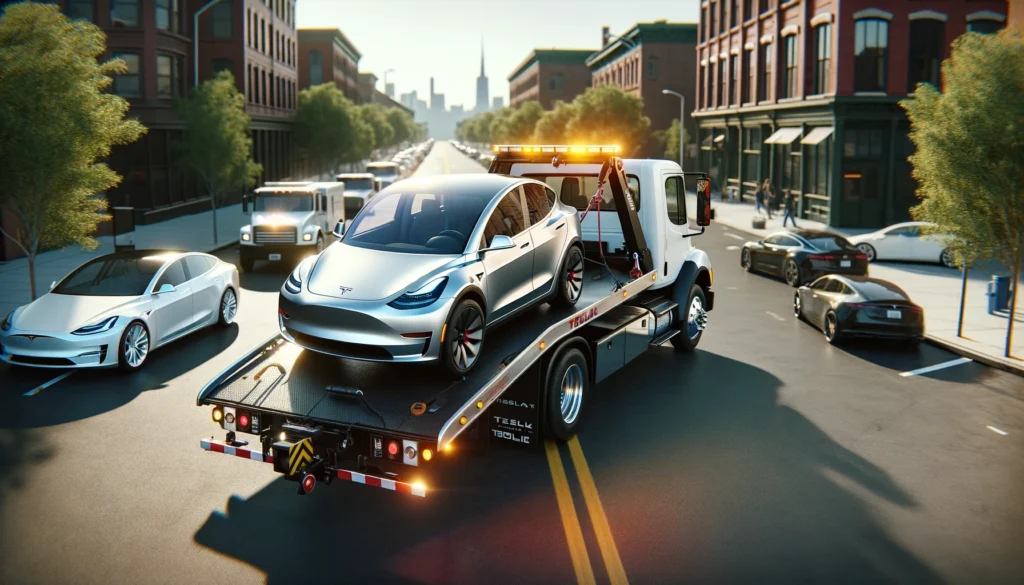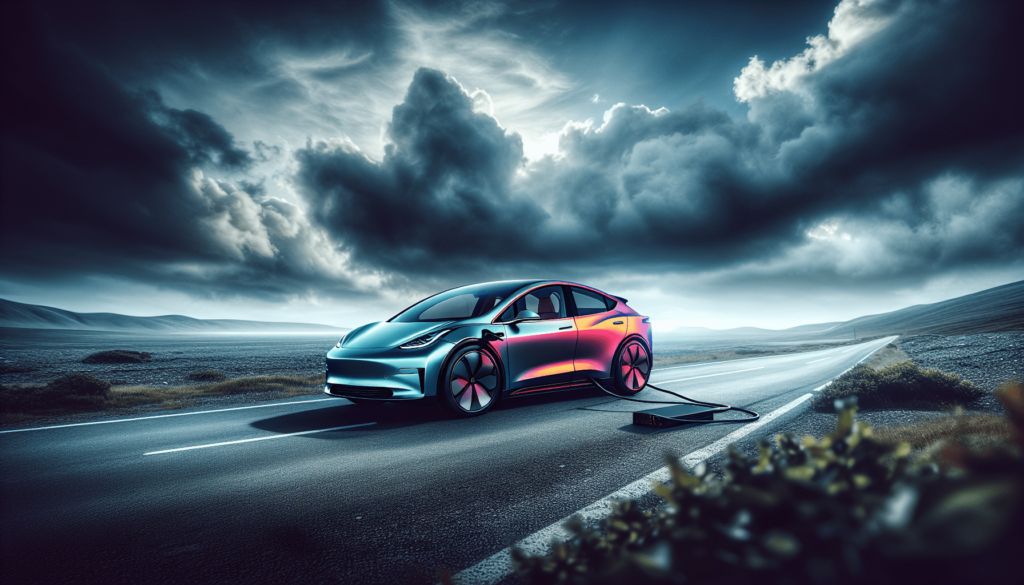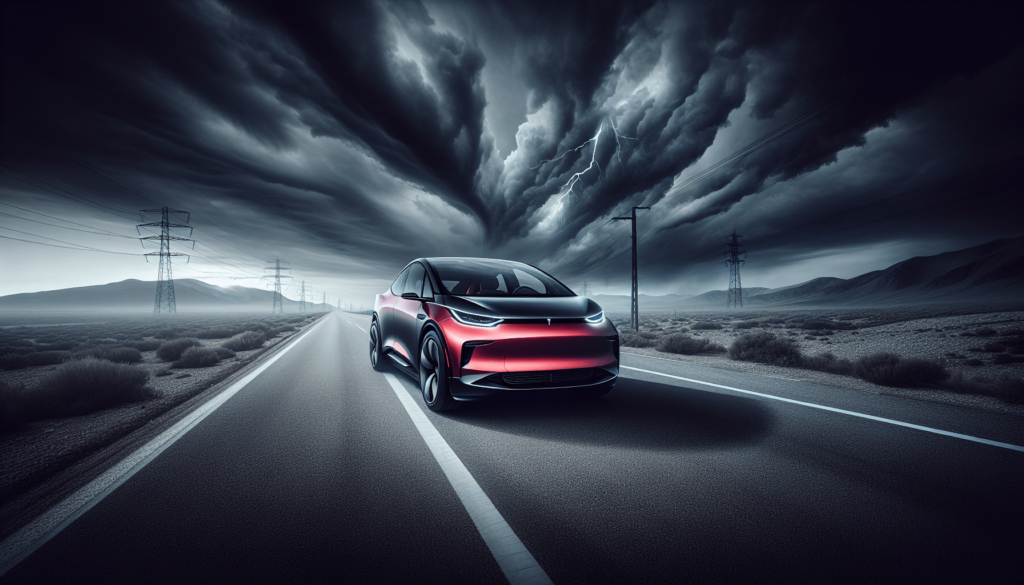Imagine you’re on a road trip, and suddenly your electric car gives you the dreaded signal – the battery has, unfortunately, run flat. It’s a scenario that might have you wondering if you can simply push your vehicle to the nearest charging station or safe location. It sounds straightforward, right? But when it comes to electric cars, things might not be as simple as they appear. Let’s explore whether pushing an electric car with a flat battery is a viable solution or if it could lead to more headaches than relief.
Understanding Electric Cars and Flat Batteries
When you get behind the wheel of an electric vehicle (EV), the experience is quite different from driving a car with an internal combustion engine (ICE). A significant part of this difference is due to the battery.
Definition of a flat battery in an electric vehicle
In an electric car, a flat battery means the car’s power source is depleted to the point where it cannot drive the vehicle forward. This is somewhat akin to running out of gas in a traditional car, but instead of refilling at a pump, you recharge at a station or outlet.
How electric cars differ from traditional vehicles
The primary difference between electric cars and their traditional counterparts lies in how they are powered: electric cars use batteries to store electrical energy, whereas traditional vehicles burn gasoline or diesel to generate power. This fundamental difference affects everything from how these cars feel to drive, to how they are maintained.
The role of the battery in electric cars
In an EV, the battery doesn’t just start the car; it powers everything. From the moment you turn on the headlights to the point where you’re cruising down the highway, the battery is your chief energy source. This makes maintaining battery health and understanding its limitations vital for electric car owners.
The Feasibility of Pushing an Electric Car
Have you ever wondered what happens if your electric car’s battery goes flat? Can you push it like a traditional vehicle? Let’s delve into that.
Physical considerations
Physically, yes, you can push an electric car, but it’s not simple. Electric cars are generally heavier than their ICE counterparts because of the substantial weight of the battery packs. This makes them more challenging to push.
Safety precautions
Pushing any vehicle poses risks, but with electric cars, there are additional electrical safety considerations. Before attempting to push an electric car, make sure you understand the safety precautions to avoid electric shock or damaging the vehicle.
Comparisons with internal combustion engine vehicles
Unlike ICE vehicles, where pushing can sometimes help in starting the engine or moving it short distances, pushing an electric car with a flat battery won’t solve much. You can’t jump-start an EV by pushing it.

Mechanical Aspects of Electric Cars Affecting Pushability
Several mechanical features of electric cars influence how easy or hard it is to push them.
Transmission system in electric vehicles
Most electric cars use a single-speed transmission. There are no gears to shift, which means if the car is off and in neutral, it should technically roll. However, this doesn’t take into account other factors like the motor’s resistance or electronic locks that might be in place for safety.
Weight considerations
The heavyweight of the battery makes electric vehicles more cumbersome. This can make the car harder to push, especially if you’re on an incline or don’t have help.
Regenerative braking system
Many electric vehicles use regenerative braking to help recharge the battery while driving. This system can create resistance when trying to push the car, as it’s designed to capture kinetic energy.
Emergency Procedures for a Flat Battery
So your electric car’s battery is flat; what do you do?
Manufacturer recommendations
First and foremost, refer to your car’s manual. Manufacturers offer specific guidelines for dealing with a flat battery, which might include emergency charging options or recommended towing procedures.
How to safely prepare an electric car to be pushed
If pushing is necessary, ensure the vehicle is in neutral and that you understand any potential safety hazards. Electric cars may have specific procedures to disengage the drive system fully.
Available emergency services and alternatives
In many cases, the best course of action is to call for professional assistance. Roadside assistance services often have the means to safely tow electric vehicles or provide emergency charging.

Tools and Equipment to Assist in Moving an Electric Car
When you’re stuck, knowing the right tools can be a game changer.
Use of tow ropes and tow bars
For short distances, tow ropes or bars might be enough. Make sure both are rated for the weight of your vehicle and that you’re familiar with how to use them safely.
Professional towing services
Professional towers have the equipment and knowledge to move your electric car without causing damage. They’re often your safest bet.
Portable battery chargers and jump starters
While jump starters won’t work in the traditional sense for EVs, portable charging systems can provide enough charge to get you to a charging station.
The Role of Car Design in Pushability
Design elements can influence how easily an electric vehicle can be moved when its battery is dead.
Aerodynamic considerations
Aerodynamics play a crucial role in how a car moves, even when it’s being pushed. Sleeker designs can reduce drag and make the vehicle slightly easier to push.
Tire design and its effect on pushing an electric car
Tires designed for lower rolling resistance can also make a small difference in how easily a car can be pushed.
Overall vehicle weight
Ultimately, the less a car weighs, the easier it is to push. Manufacturers are continually looking for ways to reduce weight without compromising safety or performance.

This image highlights the use of carbon fiber in electric hyper cars. It features an ultra-realistic depiction of a hyper car on a race track, emphasizing the material’s application in the vehicle’s design and aerodynamics.
Legal Considerations and Liabilities
Pushing a car, electric or not, involves legal responsibilities.
Insurance implications of pushing an electric vehicle
Before pushing your EV, check your insurance policy. Some policies might have specific clauses about damage caused during such events.
Traffic laws related to pushing vehicles on public roads
Different regions have different laws about pushing vehicles on public roads. It’s often illegal on highways and could require special precautions elsewhere.
Liability in case of accidents or damage
If pushing your car leads to an accident or damage, you could be held liable. Always consider the legal ramifications before proceeding.
Alternative Solutions to a Depleted Battery
Sometimes, pushing isn’t your best or only option.
Roadside assistance and EV charging services
Many services cater specifically to electric vehicles, providing mobile charging to get you moving again.
Battery swapping stations
In some areas, battery swapping is an option. This involves exchanging your depleted battery for a fully charged one, getting you back on the road quickly.
Planning for battery health and emergency charging
The best strategy is prevention. Monitoring your battery’s health and knowing your range can help avoid these situations altogether.

Preventive Measures and Best Practices
There are ways to minimize the risks associated with a flat battery.
Regular battery maintenance and monitoring
Keep tabs on your battery’s health and charge level. Regular maintenance can help extend its life and prevent unexpected failures.
Using apps and technology for battery management
Many EVs come with apps that help you monitor your battery status and find nearby charging stations.
Understanding range and efficient driving habits
Adopting efficient driving habits can help maximize your range, reducing the likelihood of getting stranded.
Future Innovations and Technologies
The future holds promise for reducing the inconvenience of flat electric car batteries.
Advancements in electric vehicle design
Manufacturers are constantly working on more efficient batteries, lighter materials, and improved designs to enhance range and reduce charging times.
Emerging solutions for battery charging and replacement
Technologies like wireless charging, faster charging stations, and more accessible battery replacement options are on the horizon.
Impacts of technology on roadside emergencies
As technology evolves, so do the solutions for roadside emergencies. Expect to see more innovative options for emergency charging and assistance, making flat batteries less of a hassle.
In conclusion, pushing an electric car with a flat battery is possible but not recommended due to various physical, mechanical, and legal considerations. Instead, being informed, prepared, and taking advantage of available services and technologies is the best strategy for dealing with this problem. As electric vehicle technology continues to evolve, so too will the solutions for managing a depleted battery, making the future of EV driving brighter and more reliable.

